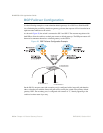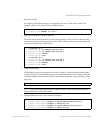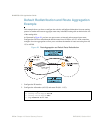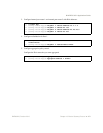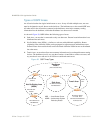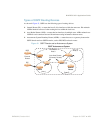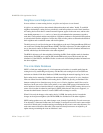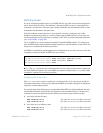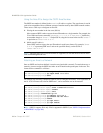
BMD00220, October 2010 273
CHAPTER 20
OSPF
BLADEOS supports the Open Shortest Path First (OSPF) routing protocol. The BLADEOS
implementation conforms to the OSPF version 2 specifications detailed in Internet RFC 1583, and
OSPF version 3 specifications in RFC 2740. The following sections discuss OSPF support for the
RackSwitch G8124:
“OSPFv2 Overview” on page 273. This section provides information on OSPFv2 concepts,
such as types of OSPF areas, types of routing devices, neighbors, adjacencies, link state
database, authentication, and internal versus external routing.
“OSPFv2 Implementation in BLADEOS” on page 278. This section describes how OSPFv2 is
implemented in BLADEOS, such as configuration parameters, electing the designated router,
summarizing routes, defining route maps and so forth.
“OSPFv2 Configuration Examples” on page 288. This section provides step-by-step
instructions on configuring different OSPFv2 examples:
Creating a simple OSPF domain
Creating virtual links
Summarizing routes
“OSPFv3 Implementation in BLADEOS” on page 298. This section describes differences and
additional features found in OSPFv3.
OSPFv2 Overview
OSPF is designed for routing traffic within a single IP domain called an Autonomous System (AS).
The AS can be divided into smaller logical units known as areas.
All routing devices maintain link information in their own Link State Database (LSDB). The LSDB
for all routing devices within an area is identical but is not exchanged between different areas. Only
routing updates are exchanged between areas, thereby significantly reducing the overhead for
maintaining routing information on a large, dynamic network.
The following sections describe key OSPF concepts.






